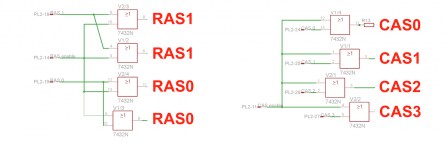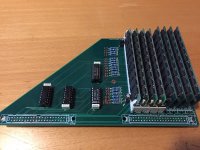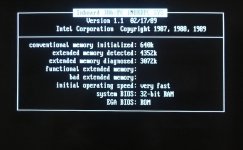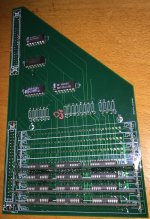As there is a lot of demand for new 2 and 4 mb expansion boards for the Inboard 386/PC, I had originally begun to develop a clone of that card. I had lost interest a few months into development and left the further work on my PCB layouts alone.
Harrison Frasier has contacted me a few weeks ago asking about info on my work. Since I was not able to invest more time into that project, I gave him all the PCB layouts and info I could find.
Based on the data Harrison designed a new PCB prototype.
He built and successfully tested the 2mb prototype a few days ago. There are still some uncertain thing to figure out but it's a big step forward.

Further work and development:
Harrison is now the owner and project manager of the expansion. I will get 2 bare prototype PCB from him to test different memory modules, TTL ICs and maybe add some modifications to get 4 or 8mb to work. My part is now to support and beta-test (which im happy with). Im glad that Harrison has taken the project up and got it to another milestone.
I think we are very close
This thread is meant as a central info point for the project.
references:
Seeking-memory-card-for-InBoard-386/page3
Harrison Frasier has contacted me a few weeks ago asking about info on my work. Since I was not able to invest more time into that project, I gave him all the PCB layouts and info I could find.
Based on the data Harrison designed a new PCB prototype.
He built and successfully tested the 2mb prototype a few days ago. There are still some uncertain thing to figure out but it's a big step forward.

Further work and development:
Harrison is now the owner and project manager of the expansion. I will get 2 bare prototype PCB from him to test different memory modules, TTL ICs and maybe add some modifications to get 4 or 8mb to work. My part is now to support and beta-test (which im happy with). Im glad that Harrison has taken the project up and got it to another milestone.
I think we are very close
This thread is meant as a central info point for the project.
references:
Seeking-memory-card-for-InBoard-386/page3








